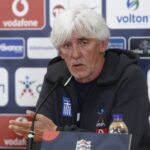On November 12, 1980, the Voyager 1 spacecraft NASA made history by sending Earth the first close-up images of Saturn and offering humanity an unprecedented glimpse into the beauty and complexity of the planet and its rings. Voyager 1, which had launched three years earlier, had already provided impressive images of Jupiter and its moonsbut its encounter with Saturn proved even more impressive, capturing details of Saturn’s rings, moons and atmosphere that scientists had never seen before.
This milestone represented a new level of exploration in planetary science. Until then, Saturn was known mostly through telescopic observations from Earth, and while it had fascinated astronomers for centuries, its characteristics remained largely a mystery. Voyager 1’s close pass, within 124,000 kilometers (77,000 miles) of Saturn, changed our view of the air giant, revealing surprising details and raising new questions that would fuel space exploration for decades.
Voyager 1’s passage changed our view of the air giant, revealing surprising details and raising new questions.
One of the most impressive discoveries from Voyager 1’s flyby was the intricate structure of Saturn’s rings. The rings, previously seen only as broad, mysterious bands, have now been revealed in close-up detail, showing hundreds of thousands of individual rings and complex wave patterns. This new perspective elevated him huge number of particles which made up the rings and ranged in size from tiny grains of dust to chunks as big as mountains.
Scientists have been particularly fascinated by so-called “shepherd moons,” small moons that appear to roam along the outer edges of Saturn’s rings, held in place by gravitational pull. These moons, like Prometheus and Pandora, turned out to be responsible for the formation of voids within the rings, further complicating the mystery of Saturn’s unique and dynamic ring system. Voyager 1’s observations of these features set the stage for years of study of the processes that shape planetary ring systems.
Another highlight of Voyager 1’s encounter with Saturn was the examination of Titan, the planet’s largest moon (satellite).
Another highlight of Voyager 1’s encounter with Saturn was the examination of Titan, Saturn’s largest moon (satellite). Titan, which is larger than the planet Mercury, had long piqued the curiosity of scientists because of its thick, orange-colored atmosphere, which appeared to be composed mostly of nitrogen and methane. Voyager 1 provided the first direct measurements of this atmosphere, revealing a dense haze that prevented any visual observation of Titan’s surface. This atmosphere was unlike any other known in the solar system at the time, prompting scientific speculation about the possibility of organic chemistry and even the possibility of some form of life.
While Voyager 1 data showed that Titan’s surface remained hidden beneath atmospheric layers, they also hinted at an active world beneath the mist. This set the stage for later missions, including the Cassini-Huygens mission, which would eventually land a probe on Titan’s surface in 2005. Titan’s atmosphere and mysterious landscape continued to be at the center of planetary science and astrobiology, with Voyager 1 data to provide the first excruciating evidence.
After its Saturn flyby, the spacecraft continued its journey out of the solar system, eventually passing into interstellar space.
After its flyby of Saturn, Voyager 1 continued its journey outside the solar system, leaving the Saturn system and finally passing into interstellar space in 2012, becoming the first human object to do so. Its encounter with Saturn on November 12, 1980 was the last major planetary encounter for the spacecraft, which has remained a symbol of human curiosity and the search for knowledge beyond our solar system.
The images and data returned by Voyager 1 they changed not only our understanding of Saturn but also our approach to space exploration. The mission showed that robotic probes can venture far beyond Earth and gather invaluable information about worlds humans may never reach. Voyager 1’s success helped pave the way for more ambitious missions, such as Galileo to Jupiter, Cassini to Saturn, and New Horizons to Pluto, which further expanded our understanding of the outer solar system.
Column editor: Myrto Katsigera, Vassilis Minakakis, Antigoni-Despina Poimenidou, Athanasios Syroplakis




